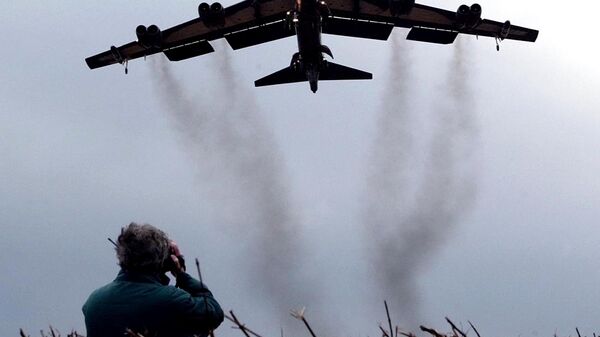Recent research by the non-profit think tank RAND Corporation suggests that the US Air Force lacks capability to meet current and future demands. Researchers have analyzed how military equipment will perform in four plausible future scenarios — "cold wars with Russia and China," peace enforcement operations and counterterrorism missions.
None of the aircraft performed perfectly in all four scenarios. Jets came the closest, having failed in just one of the scenarios after attaining only 64% of effectiveness in that particular one. Refueling aircraft also came close, with 90% in three scenarios, while only 32% in peace enforcement operations.
READ MORE: US Air Force Tests Upgraded ‘Earth-Penetrating' Nuclear Bomb
C3ISR/BM (command, control, communications, intelligence, surveillance, and reconnaissance/battle management) platforms showed the poorest results with 84% in one scenario and from 29 to 63% in others. RAND explains the failure due to a high demand for such equipment, but lower than necessary supplies, creating shortfalls.
The research also points out that the US Air Force's effectiveness drops significantly in missions that last more than a year. According to the think tank, such missions put high pressure demands on force structures and in its current state, the US air fleet can't cope with it effectively and requires a boost in contingency for that to happen.
READ MORE: US Air Force's Mysterious X-37B Plane Spotted Above Netherlands (PHOTOS)
RAND points out that the US Air Force needs to work out a solution for long-term missions based on an analysis of the flaws in the existing system and identify the shortfalls in current capacities using the experience from previous missions as a basis.
The report comes amid news that the US Air Force at Iwakuni base on one of the Japanese islands has requested a supply of transportable lightning rods because the newest F-35 jets lack proper passive protection from lightning. According to the Pentagon, F-35 producer Lockheed Martin is already testing a system that will protect the jet's electronics in case it is struck by lightning.


